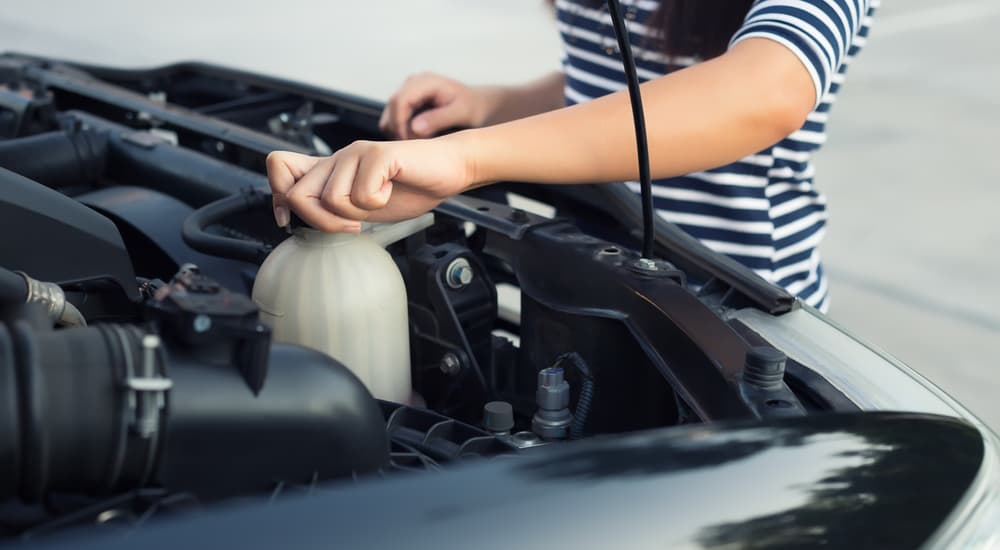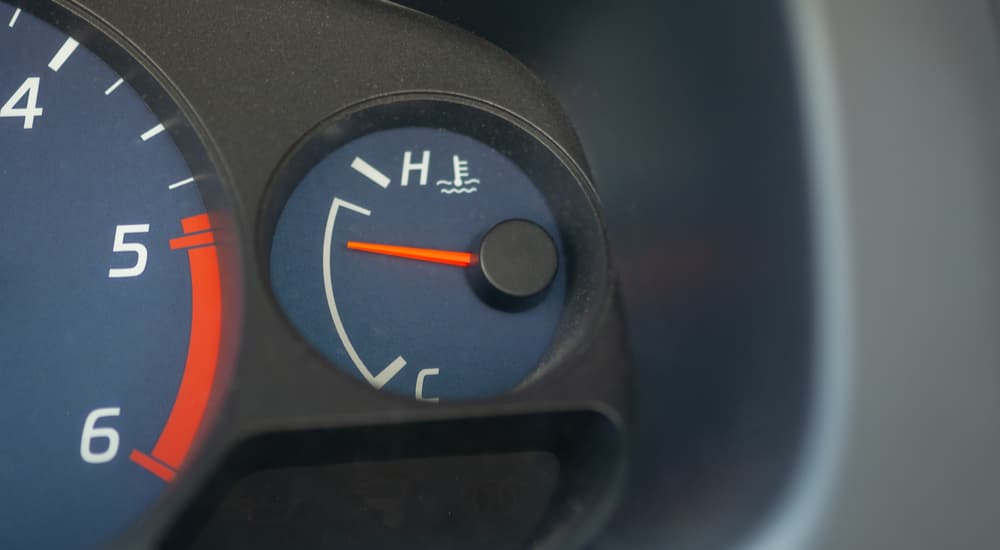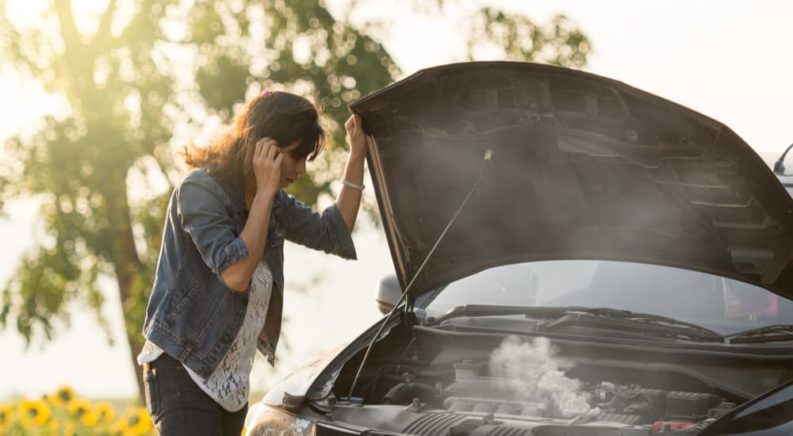You’re cruising down the road, perhaps going to work or simply enjoying your day off, when all of a sudden great plumes of steam start rolling out from under the hood of your car; what do you do? Do you freak out and panic, perhaps slam on your brakes in the middle of traffic or dangerously veer over to the side of the road? No, you’re going to be cool like Fonzie; safely get over to the side of the road when you can, and then let your engine get as chill as you are.
Whether you’ve had issues with your engine overheating before, or you’re concerned about problems that might be popping up, it’s important to know what to look for and how to deal with it. There are a number of reasons your engine can overheat–some of them are pretty simple to fix, while others can be more problematic. Whatever the reason, however, you always want to fix the problem quickly because a minor issue now is far easier and less expensive to repair than the damage to your engine that can occur when it overheats.
How Your Engine is Cooled
Before we dig into overheating, let’s take a quick look at how your engine is cooled. An internal combustion engine lives up to its name: thousands of fiery explosions occur within the cylinders of your engine to provide power to the rest of your vehicle. Even though the engine is designed to withstand a tremendous amount of heat and pressure, it has its limits, so there’s a cooling system there to help keep it at a reasonable temperature.
Some engines are air-cooled (mostly old VWs and classic Porsches), but most car engines use liquid cooling to help dissipate heat from your engine. The liquid in question, or coolant, is a mixture of distilled water, antifreeze, and a few other chemicals. Once you start your car, a pump moves the coolant through a circuit that includes several hoses connecting your engine to your radiator. Coolant goes through channels in the engine, absorbs heat from it, and then passes into the radiator, where it’s cooled off before returning to the engine to absorb more heat.
The coolant is used in this way to create a heat exchange process–the engine itself drives the water pump system and a fan to help move air through the radiator to assist with this whole process. As long as everything is working properly, the engine will remain cool enough to keep working. Just remember that this is all relative; your engine is still incredibly hot, but it’s designed to handle it.

What Causes Engine Overheating?
Although several different specific causes can occur, in general, your engine overheats because something has gone wrong with the cooling system. This usually means you don’t have enough coolant, your coolant isn’t moving through the system properly, or it’s not being cooled in the radiator. You can also have a combination of these things that result in your engine overheating. Some of the most common reasons this can happen include:
- Low or No Coolant: One of the most common causes of overheating is that you don’t have enough coolant in the system. Check your coolant reservoir and add more water or coolant to it–just remember that low coolant usually means you have a leak somewhere.
- Coolant Leak: The reservoir itself might have a leak that needs to be patched, but leaks most often occur due to an old or damaged hose that needs to be replaced.
- Broken Water Pump: If the pump isn’t working properly, then it won’t move the coolant through the system. It might be able to be fixed, or it may need to be replaced.
- Radiator Problems: The radiator itself needs to work correctly to dissipate heat. Dirt buildup or a problem with the fan(s) on the radiator can all result in overheating.
- Clogs and Obstructions: You can also end up with clogs inside the hoses that are part of your cooling system or in the water pump. Even the channels within your engine can become clogged and reduce the flow of coolant, resulting in overheating.
For the most part, these are all pretty simple things that can go wrong, and most of them are easy to repair. Whether you can do this work yourself or you prefer to have a trained professional handle it, it’s vital that you have it taken care of right away. Small problems can be easy and pretty cheap to fix; ignoring them is a great way to have your engine seriously damaged, which is far more expensive and time-consuming.
Signs Your Engine is Overheating
The bad news is that a lot of the signs that your engine is overheating can be pretty dramatic and can freak you out if you’re not ready for them. On the other hand, the good news is that these things are often early warnings and not a sign that your engine is about to melt into scrap. There are a few key things to watch for, and responding to them quickly is very important.
- Steam: Perhaps the most alarming sign that your engine is overheating is steam coming up from under the hood of your car. You might think it’s smoke; if it’s white, then it’s actually steam. This is still bad, but nothing is on fire.
- Temperature Gauge: You should always take an occasional glance at the temperature gauge on your dashboard. If it’s moving toward the high end or into the red, then that means your engine is getting too hot. On cars without a temperature gauge, a warning light that looks like a red thermometer will come on if your engine is overheating.
- Strange Smells: One early sign that your engine is starting to overheat is a burning smell, which usually means your motor oil is getting too hot. If you notice a sort of sickly sweet smell, then that typically means you have a coolant leak that’s boiling on the hot surface of your engine.
None of these signs are good, but they’re all essentially warnings that something is going wrong. Your engine isn’t about to die in the next 10 seconds, but you need to react promptly.

What to Do When Your Engine Overheats
The most important thing you need to do when your engine starts to overheat is to safely get over to the side of the road as quickly as possible. If you’re less than a mile from your destination and you notice the temperature gauge climbing, but not actually in the red yet, then you might be able to get there safely but don’t push it. Even if you see smoke coming out of the hood of your car, don’t slam on the brakes and make a scene–stay calm and get to the side of the road in a way that doesn’t put anyone in danger.
You should turn off your air-conditioning immediately since that puts more cooling demands on your vehicle, roll down your windows, and turn on your heat. Your vehicle’s heating system actually uses hot air from around your engine, so turning it on can help prevent overheating by pulling more heat away from the engine. Once you get pulled over safely, turn off your vehicle and prepare to wait at least 30 minutes for it to cool down. You can watch the temperature gauge to see when it has dropped–if you need to have your ignition switched to “on” or “accessory,” that’s fine, just don’t actually start the engine again until it has cooled down.
Once it’s cooled, then you can open your hood–but do not do this until the temperature drops, or you risk getting seriously burned by hot steam. Water turns to steam at more than 200 degrees, so it’s incredibly hot and dangerous. As you safely lift the hood and check your engine, look to see that you have enough coolant; if it’s low, then you can refill it with any spare coolant you have, or you can even use water as a temporary fix in an emergency (although this can cause long-term corrosion). Beyond that, you’ll need to safely get it to a repair shop or work on whatever is wrong yourself if you have the equipment and experience to do so.

